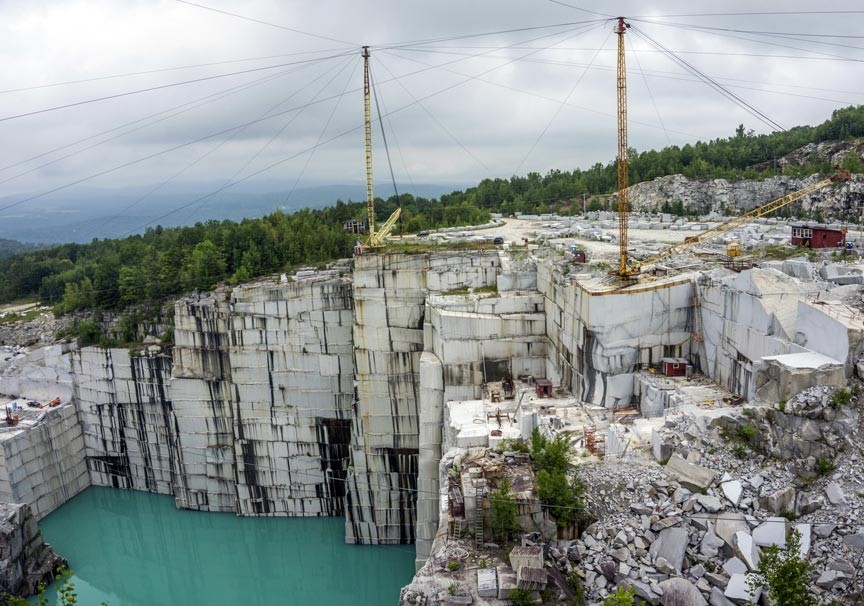Diving right into of Granite Quarries in South Africa
Diving right into of Granite Quarries in South Africa
Blog Article
Unearthing the Rich History and Sustainable Practices of Granite Quarrying
As we depend on the precipice of revealing the detailed tapestry of granite quarrying, a journey via time reveals not just the physical act of extracting stone however additionally the social and historical importance woven right into the really fabric of this technique. From the old beginnings that laid the structure for modern-day quarrying strategies to the lasting techniques that are forming the future of this industry, each carve mark on granite surface areas narrates waiting to be discovered (granite quarries in south africa). The tradition of granite quarrying extends much beyond simple removal; it is a testament to human resourcefulness, resilience, and the enduring appeal of this marvelous rock
Ancient Beginnings of Granite Quarrying
Going back to old worlds, the practice of quarrying granite has been an essential component of human history and architectural advancement. The earliest evidence of granite quarrying go back to ancient Egypt, where large pyramids and elaborate sculptures were crafted from this durable stone. The Egyptians used primitive tools to draw out granite blocks from quarries, showcasing the value of this product in their monumental constructions.
Progressing in background, the Greeks likewise made substantial contributions to the quarrying of granite. The Greeks made use of granite in various building marvels, such as holy places and statuaries, showing their skill in shaping and sculpting this hardy rock. The Romans even more fine-tuned the methods of quarrying granite, using advanced devices like knives and hammers to extract and shape granite for their iconic frameworks.
With the centuries, the practice of quarrying granite has developed, with modern technologies improving performance while preserving the classic appeal of this all-natural rock - granite quarries in south africa. From old civilizations to modern home builders, the tradition of granite quarrying continues to shape our world
Advancement of Quarrying Strategies
The evolution of quarrying strategies has been noted by a constant progression towards higher efficiency and accuracy in drawing out granite. From the fundamental techniques utilized by our forefathers to the advanced technologies made use of in modern-day quarrying procedures, the industry has actually gone through significant innovations. Early quarrying strategies entailed manual work with standard tools such as knives, hammers, and wedges to draw out granite blocks from the earth. As human beings advanced, techniques like fire-setting and primitive dynamites were presented to assist in the extraction procedure.
In even more recent times, the arrival of equipment transformed the quarrying sector, enabling quicker extraction rates and increased efficiency. Technologies such as ruby wire saws, high-pressure water jets, and pneumatic drills have actually come to be common in modern-day quarries, permitting exact cutting and decreased waste. Advancements in computer-controlled equipment and 3D modeling have actually enhanced quarrying operations, leading to minimal ecological effect and boosted sustainability techniques. As the demand for granite remains to climb, the advancement of quarrying strategies remains essential to conference sector requires successfully and sustainably.
Cultural Significance of Granite
Granite holds an extensive cultural value throughout different civilizations due to its long-lasting presence in building masterpieces and revered monoliths. The cultural value of granite prolongs past its physical qualities; it embodies strength, stability, and eternity, making it a symbol of withstanding legacies and customs.

Lasting Practices in Quarrying
Among the abundant background of granite quarrying and its cultural significance exists a growing focus on lasting methods within the industry. As ecological understanding and issues concerning source exhaustion have increased worldwide, the quarrying industry has actually progressively welcomed sustainable methods to lessen its effect on the setting and surrounding areas.

Additionally, improvement and rehab of quarry sites post-extraction are essential to sustainable methods. By restoring quarried areas to a natural or helpful state, such as developing wild animals habitats or recreational spaces, quarriers can offset the environmental footprint of their procedures and add positively to the regional community.
Heritage of Granite Quarrying
With a historical background soaked in craftsmanship and industrial progression, what sustaining influence has granite quarrying left on the landscape of modern-day culture? The tradition of granite quarrying transcends plain removal practices; it has shaped building marvels, urban landscapes, and social heritage worldwide. The long lasting nature of granite has made it a preferred selection for monoliths, buildings, and framework, standing as a testament to the skill and virtuosity of quarry workers across generations.
Moreover, the financial footprint of granite quarrying can not be forgotten. The market remains to give employment possibility and drive local economic situations in regions where granite removal prevails. It has actually additionally spurred technical innovations in quarrying strategies and devices, leading to more reliable and sustainable methods.
In terms of sustainability, the tradition of granite quarrying consists of efforts to minimize environmental impacts with recovery projects and liable here are the findings resource monitoring. By balancing economic rate of interests with ecological stewardship, the sector strives to make sure that future generations can continue to benefit from this enduring natural resource.
Final Thought

Report this page